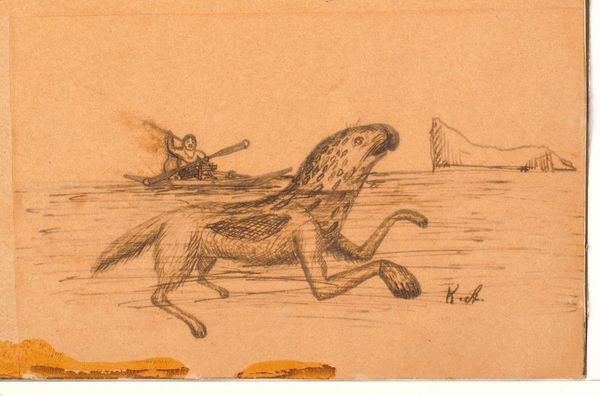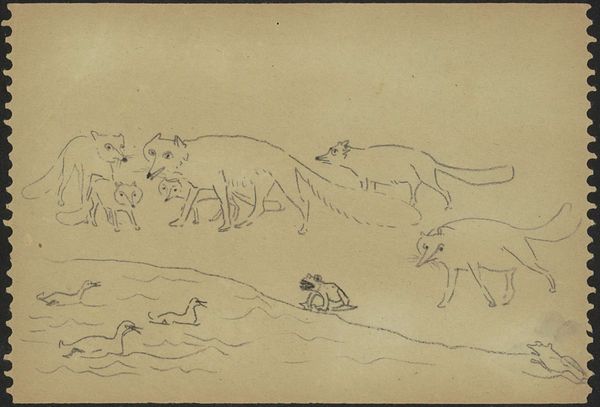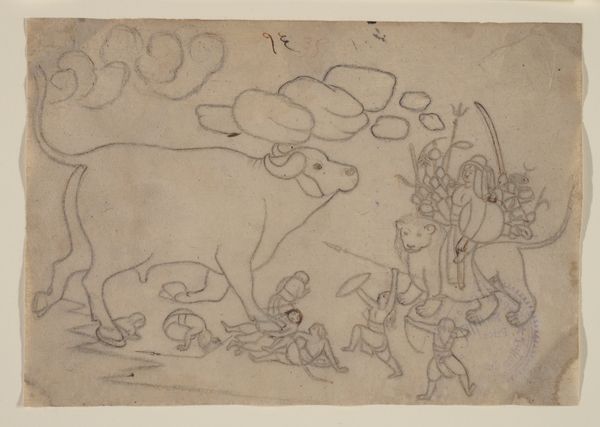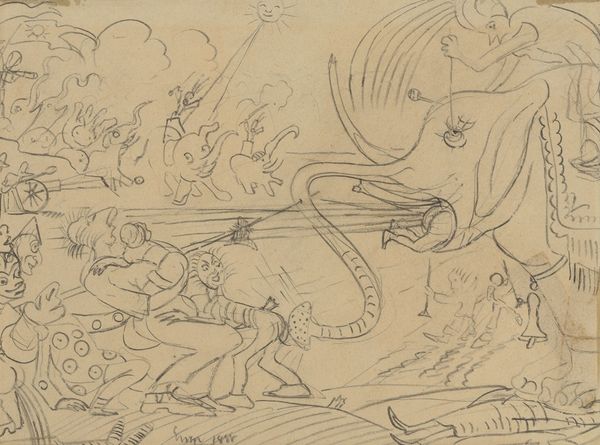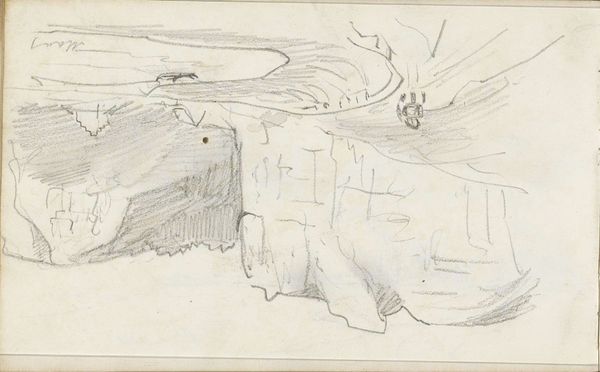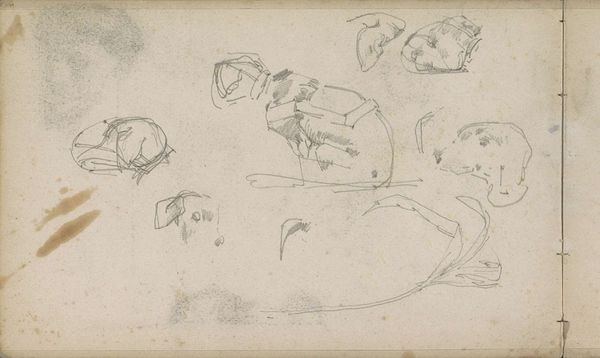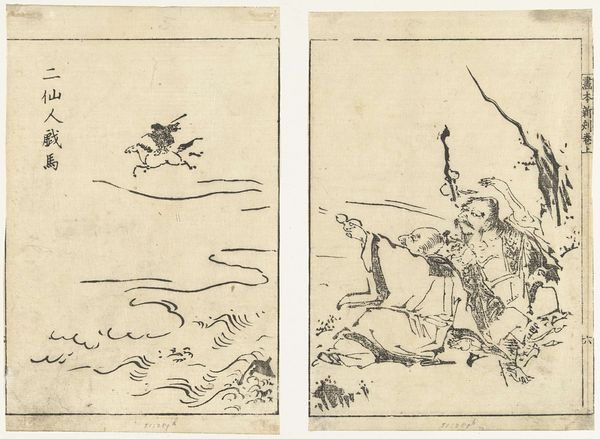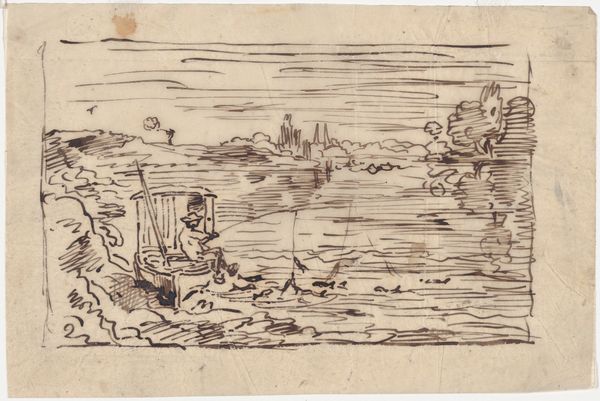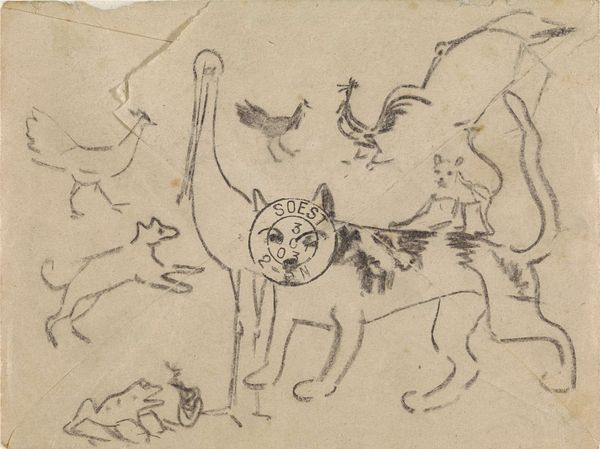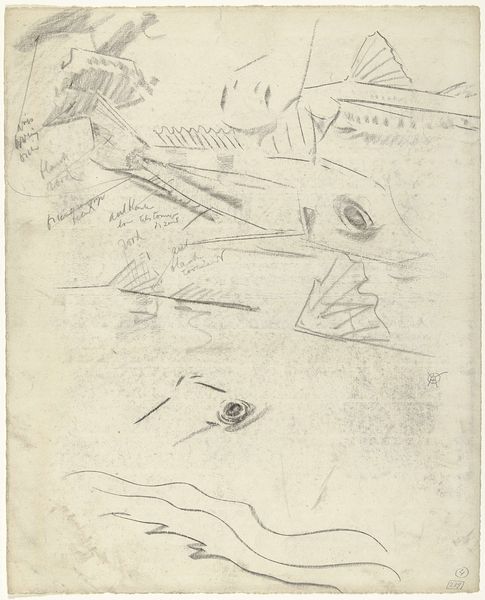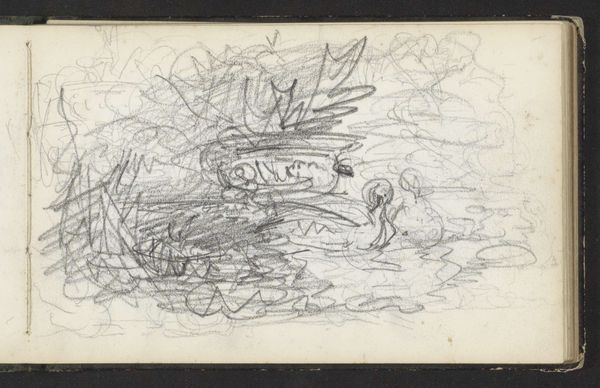
Schetsen van nijlpaarden, zeilbootjes en een straatlantaarn 1876 - 1924
0:00
0:00
drawing, pencil
#
drawing
#
pen sketch
#
landscape
#
figuration
#
pencil
Dimensions: height 123 mm, width 180 mm
Copyright: Rijks Museum: Open Domain
Curator: Here we have "Sketches of Hippos, Sailboats and a Streetlight" created between 1876 and 1924 by Gerrit Willem Dijsselhof. It's a pen and pencil drawing. What’s your initial read? Editor: The whimsical nature immediately strikes me. There is something about the co-existence of the wild hippos, with their cartoonish toothy grins, against the backdrop of this sun-drenched landscape complete with tiny sailboats and a delicate streetlamp that creates a playfully bizarre visual field. Curator: Exactly! The composition sets up a fascinating tension. We see various line weights. Look how Dijsselhof uses the thickness of the pencil to define shapes—a method, stylistically, which emphasizes both mass and void. Also note the streetlamp. A man-made form situated next to these free and wild hippos—all sharing one space. Editor: Absolutely, and that brings me to the inherent socio-political commentary suggested here. It reflects, perhaps unconsciously, the era's fascination with exoticism but also anxieties about encroaching industrialization. The street lamp symbolizes progress. Is it a helpful symbol or does it indicate potential ecological disruption? This prompts a further investigation into colonial dynamics of this period. Curator: I am drawn more to how Dijsselhof deploys contrasting strokes. Look at how lightly the sailboats are drawn, juxtaposed with the relatively dense pencil work used to draw the hippos. They really anchor our eye. Are they perhaps more central to the reading than the setting? I also like how the sun and moon seem to mirror one another within this constructed field of pictorial representations. Editor: True, but doesn’t it underscore the complexity of how the natural world was, and still is, often represented. As though, by trying to define nature, it is immediately subjected to social ideas—like our ideas about day and night! The work encourages discussions of post-colonial ecological anxieties as a whole! Curator: Perhaps. Still, the effectiveness lies in his handling of light and shade, creating depth through minimal yet decisive mark-making. This elevates the piece beyond mere social commentary to a sophisticated formal study. Editor: Maybe! But art always reflects and refracts its social moment, whether intentionally or not! Thank you for sharing! Curator: Of course.
Comments
No comments
Be the first to comment and join the conversation on the ultimate creative platform.
